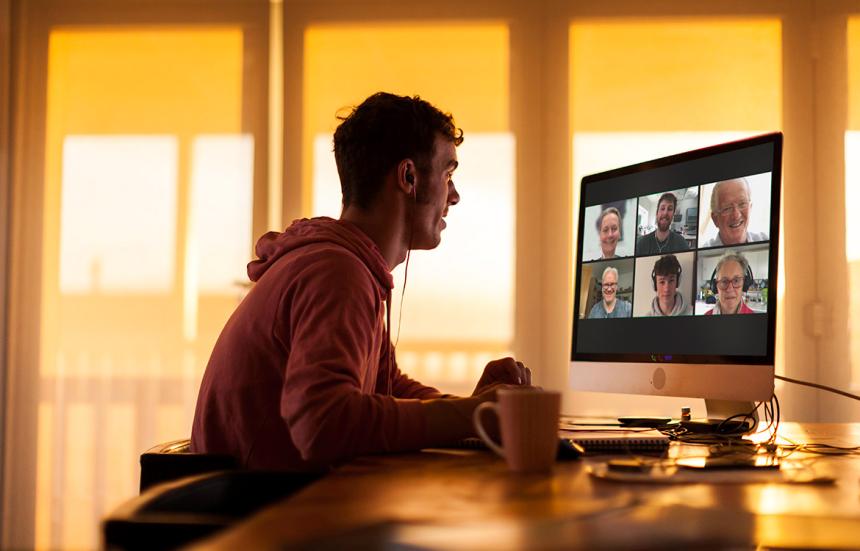COVID-19, One Year Later. Here’s What We’ve Learned.

It was March 11 last year when the World Health Organization first announced that the coronavirus had reached pandemic stage. At the time, there were 118,000 cases in 114 countries. A year later and there are more than 114 million cases and 2.5 million deaths worldwide.
In the year since the pandemic officially started, doctors, researchers and the American public have learned a lot about the virus. We know how it spreads — through droplets and in the air; we know how it likely doesn’t spread — on surfaces (you should still wash your hands regularly); we know the virus isn’t seasonal like flu – it didn’t go away during the summer; and we know that we can fight it, both through prevention and treatment.
Speaking of treatment, we’ve learned a lot about what works in the fight against COVID-19, the condition caused by the coronavirus. The anti-inflammatory steroid drug dexamethasone, for example, works in many patients on supplemental oxygen or ventilators. Antibodies — either from convalescent plasma or man-made ones from monoclonal antibody treatments — seem to keep some patients from more severe illness. These treatments have been granted emergency use authorization by the Food and Drug Administration.
Even simple things, like turning patients prone (lying face down) have turned out to be lifesaving for many people hospitalized with the disease.
But there’s still much we don’t know. And there’s still a lot of misinformation and myths swirling around 12 months after the pandemic began. I thought it would be helpful to recap some key learnings.
Vaccines are here, but the virus isn’t going away any time soon.
It’s hard to believe that in a little less than a year scientists created numerous vaccines to combat the coronavirus. In fact, the Food and Drug Administration approved a third vaccine last week — and this one, from Johnson & Johnson, is a single-dose vaccine that’s easier to transport and store. It should help vaccines become more widely available in the next couple of months.
If you’ve already gotten your vaccine, your behavior shouldn’t change — that’s the advice of the Centers for Disease Control and Prevention. That’s because the vaccines prevent severe illness from infection. You may still be able to get the virus and spread it.
This advice may change. Promising but unpublished studies suggest that vaccinated individuals carry lower viral loads and may be at lower risk to spread the virus. If you’re thinking, why get the vaccine if I still have to wear a mask? Get the vaccine when it’s your turn. The vaccines are our best hope to contain the virus; and while the CDC’s guidance may change based on new evidence, you should follow their current guidance: Keep wearing your mask, practice social distancing and wash your hands.
One rule that has changed for those who have been vaccinated: You may not have to quarantine after exposure if you meet certain criteria and it’s been more than two weeks since your last dose.
Eating at a restaurant increases your risk of getting the virus.
We love eating at restaurants, but many are poorly ventilated and crowded with people. Even at reduced capacity, the CDC rates eating inside at a restaurant to be higher risk than other activities. A study from six months ago suggested that COVID-19 positive patients were twice as likely as those who tested negative to have eaten at a restaurant in the two weeks leading up to their illness.
It’s possible that people who eat at restaurants during the pandemic take other risks that increase their chances of getting the virus, but there are also early studies that track breakouts to restaurant eaters. It’s still safer to get your food to go — or eat outside away from other diners.
So does gathering with your family.
Just like eating out, there are plenty of studies showing the transmission of the virus when families get together. Among adults with COVID-19, 42 percent reported close contact with a person with COVID-19 — and most of those close contacts were with family members.
In one case study from last summer, a single COVID-positive adolescent on a family vacation with three different families spread the illness to 11 other family members. There are dozens of cluster studies like these from contact tracing efforts — weddings, reunions, holiday parties, barbecues and even more intimate gatherings. Getting together with family without proper protocols can result in spreading events.
Even without gatherings, household members are often the point of contact for new COVID cases. Household transmission of this coronavirus is 16.6 percent higher than with past pandemics like SARS and MERS.
To be fair, more infections have been traced to other kinds of activities than seeing family — from workplaces to prisons to assisted living facilities to colleges. But you shouldn’t let your guard down when you’re around your family.
Six feet of distance probably isn’t enough.
Early guidance from the CDC defined close contact as spending 15 minutes or more within six feet of a person infected with COVID-19. The six-foot distance was based on COVID transmission from droplets, which we emit when we talk, sneeze or cough. We’ve been studying viral transmission by droplets since the 1890s.
Of course, there are plenty of studies over the years that suggest droplets can travel further. The problem with COVID is that you can become infected from aerosol transmission — smaller droplets and particles can float in the air for minutes and hours and travel far from the source. Still, the CDC says that most transmission comes from close contact with infected individuals.
As for time, that one’s trickier. Some school systems and employers liberally interpreted the 15 minutes to mean that as long as you kept contact brief, you were okay. But repeated exposure can also result in an infection, which is one reason the CDC changed the guidance last fall to 15 minutes over a 24-hour period. Here’s the bottom line: The more you interact with others and the longer that interaction lasts, the greater your chance of contracting COVID.
The best way to prevent spread is to avoid unnecessary exposure.
Yes, masks help prevent the spread of the virus.
I know a lot of people have had a hard time warming up to face masks. Early in the pandemic, public health officials lacked clear evidence about the effectiveness of masks and hesitated to recommend them. But 12 months later, there’s a raft of evidence that masks (double ply cloth, surgical and N95) reduce the transmission of the coronavirus. In fact, the Proceedings of the National Academy of Sciences of the U.S., which recently published a review of studies about masks and COVID-19 transmission, concluded:
“The preponderance of evidence indicates that mask wearing reduces transmissibility per contact by reducing transmission of infected respiratory particles in both laboratory and clinical contexts.”
Some study highlights:
- In states where there were mask mandates, hospitalizations declined after the mandate.
- In counties with mask mandates, COVID infections declined; in counties without them, incidences increased.
- Masks were 79 percent effective at preventing household transmission, if used by all members of the household before symptoms showed.
The devil is in the details. We know from COVID studies and previous viral studies that masks reduce risk of transmission for the wearer and for the people around them if the wearer is sick.
Double masks may even be better.
One mask works if you wear it correctly. Two might actually be better.
The CDC recently released new masking guidelines based on studies it did to determine how to improve their efficacy. The agency looked at wearing a cloth mask over a medical procedure mask (often called a surgical mask, but not an N95) and whether knotting the ear loops of a medical procedure mask and then tucking in and flattening the extra material close to the face would reduce risk.
Both modifications improved the masks effectiveness. According to the CDC’s experiments, an unknotted medical procedure mask blocked 42 percent of the particles from a simulated cough. A cloth mask blocked 44.3 percent. Knotting the surgical mask alone blocked 63 percent of particles. When the cloth mask was combined with the knotted surgical mask, it blocked 92.5 percent of particles.
The CDC has since updated its recommendations. If you use an N95 or KN95 mask, the agency does not recommend double masking. It also doesn’t recommend doubling up surgical masks.
Testing negative doesn’t mean you stay negative.
This may be one of the hardest things for people to understand. A lot of people get tested after they’re exposed, but you can test negative one day and positive the next, depending on the time from when you were exposed, the course of the infection and the type of test you took.
When you’re exposed to someone with the virus and become infected, symptoms may show a few days after exposure or up to two weeks later. If you test too soon, a test may not pick up the infection. If you’re asymptomatic, a rapid antigen test may not pick up your infection at all. Accuracy is lower in antigen tests than PCR tests, especially in those who aren’t showing symptoms.
That’s why it’s so important to observe CDC guidelines when it comes to testing and exposure. If you’ve been exposed to the virus, the CDC recommends you quarantine for 10 days, provided you remain asymptomatic. You can reduce this time to seven days if you show no symptoms and do not test positive for the virus on day 5 or later.
The new variants are a reason to be vigilant.
The new variants are more than troublesome. Many of them are more communicable and one, the British variant, is looking like it may be more virulent.
This is why we need to keep washing our hands, wearing masks and practicing social distancing. And why we should get the vaccine when it’s our turn. Don’t let up now!
With a little extra effort from all of us, I believe we can beat back this virus, and we’re well on the way. We’re better at treating it, and we know how to stop its spread. If enough of us do these things, there’s a chance these variants won’t make the impact that some researchers currently fear.
We may have to take booster shots in the future, but that’s a lot better than where we were a year ago when we had no vaccine, few promising treatments and knew very little about COVID-19.
What a difference a year makes.
